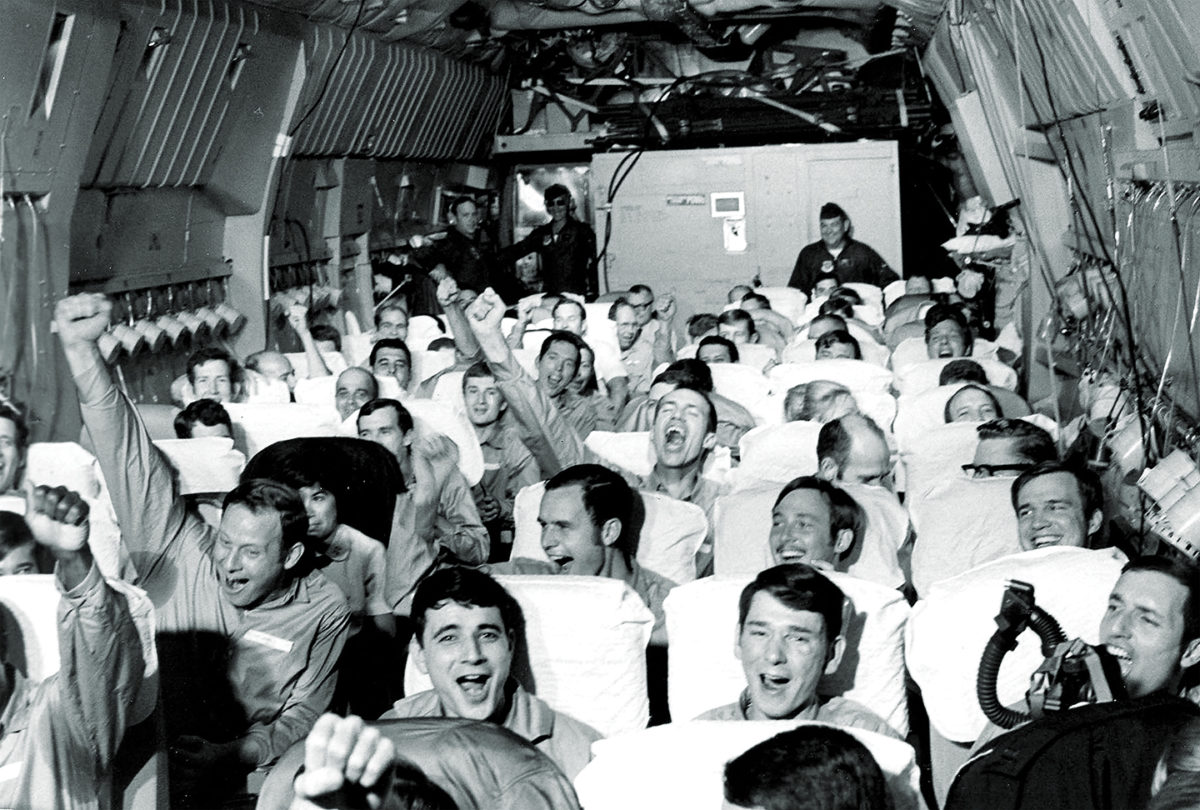The column of buses groaned to a halt near the bomb-cragged hangar at Hanoi’s Gia Lam Airport just after noon on Feb. 12, 1973. The men inside were the first 116 American POWs slated for repatriation. Some 700 miles south, another 27 captives of the Viet Cong were scheduled for release at Loc Ninh, South Vietnam. At the head of the line, the first 20 U.S. servicemen sat in expectant silence. For the most part, these were the “Old Timers”—those held longest in North Vietnam’s notorious Hoa Lo prison, sardonically dubbed the “Hanoi Hilton” by inmates.
As a matter of code and honor, the men of the “4th Allied POW Wing,” as they had named themselves, agreed that they would accept release only in the order of capture. In the front seat sat the Hilton’s first “guest,” Lt. j.g. Everett Alvarez Jr., 36, a Navy A-4 Skyhawk pilot who became the first American shot down over North Vietnam on Aug. 5, 1964. Beside him was Lt. Cmdr. Robert “Bob” Shumaker, the second-longest held among those assembled.
Suddenly a great cheer went up among the men. Someone had spotted the silver and white visage of a C-141 Starlifter, tail emblazed with a medical red cross, coming in for a landing. After eight and a half years of dashed hopes, Alvarez allowed himself to truly believe that the time of his liberation was at hand.
A Years-Long Effort For Freedom
Alvarez had been held captive by the Vietnamese longer than anyone except Army Special Forces Capt. Floyd “Jim” Thompson, captured by the Viet Cong after the O-1 Bird Dog spotter plane he was a passenger in (the pilot was killed) was shot down near Quang Tri, South Vietnam, some four months prior to Alvarez. Cruelly, Thompson’s “Freedom Day” would have to wait. Although he had finally been brought to Hoa Lo the day after the Agreement on Ending the War and Restoring Peace in Viet Nam—better known as the Paris Peace Accords—was signed on Jan. 27, 1973, his release would not come until more than a month after this initial group. Kept separate from the Hilton long-timers, Thompson and others later speculated that the North Vietnamese had held him longer hoping that an improved diet would mask years of starvation and torture.
Indeed, hundreds of other American prisoners of war like Alvarez, Shumaker, and Thompson had suffered unimaginable degradation at the hands of their captors. As the big C-141—soon to be affectionately dubbed the “Hanoi Taxi”—rolled to a stop some 50 yards away, the trials and tribulations that this group of men had known as captives would soon end.
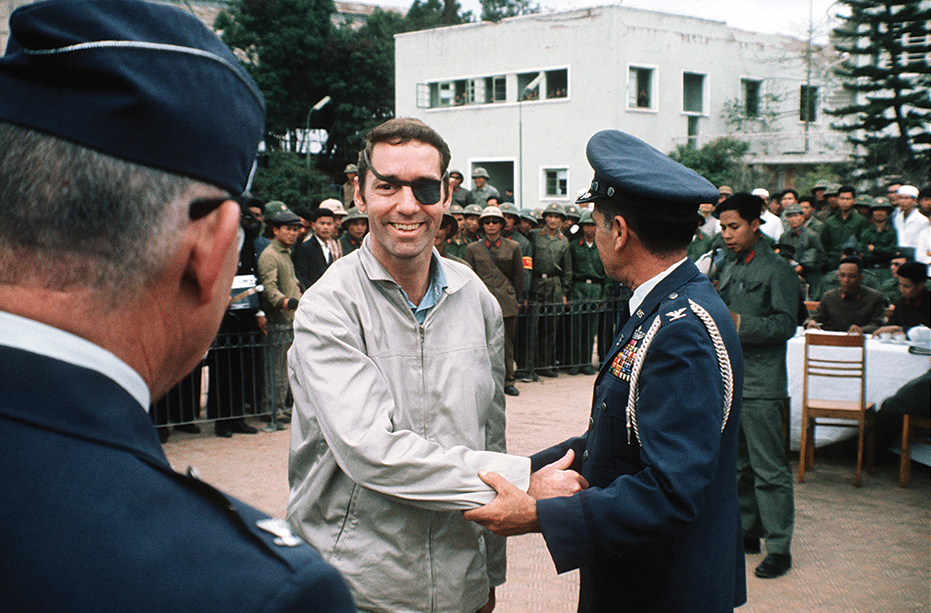
This moment was perhaps the most significant step in a years-long effort involving thousands of personnel from the federal government, Department of Defense, and all four military branches and the U.S. Coast Guard. As U.S. involvement in the Vietnam War deepened in 1966, officials realized the need to prepare for the eventual repatriation of the accompanying surge of American POWs.
What followed was one of the most comprehensive and detailed operations of the war. Planners worked through nearly every detail of repatriation, from transportation, logistics, and personnel to every conceivable need and want of returning POWs. The goal was straightforward: no effort would be spared in ensuring the returnees’ physical, mental, and material well-being.
How Operation Homecoming Was Planned
Years earlier, the Joint Chiefs labeled the burgeoning plan “Operation Egress Recap.” But outgoing Defense Secretary Melvin Laird—who had waged a personal crusade on the POWs’ behalf since entering office in 1969—insisted the operation have a name more befitting its core ethos. To Laird, the “long-awaited repatriation of Americans captured in Southeast Asia deserved a more meaningful, more humanely engaging title.” On Jan. 8, 1973, he ordered that the operation henceforth be known as “Homecoming.”
According to the peace agreement, American POWs were to be released in increments directly linked to proportional withdrawals of remaining U.S. forces in Vietnam. Homecoming provided that each increment be repatriated in three phases. Phase I would see the return of POWs to U.S. control via flights from either Hanoi’s Gia Lam Airport, or from agreed-upon handover locations throughout Southeast Asia.
The destination was to be Clark Air Base in the Philippines. Clark had been chosen as the Joint Homecoming Reception Center for all returning POWs because of its proximity to Vietnam and its sprawling hospital facilities. The stay at Clark was to be intentionally brief, ideally no longer than 72 hours. The goal was to get the men home as quickly as safety allowed.
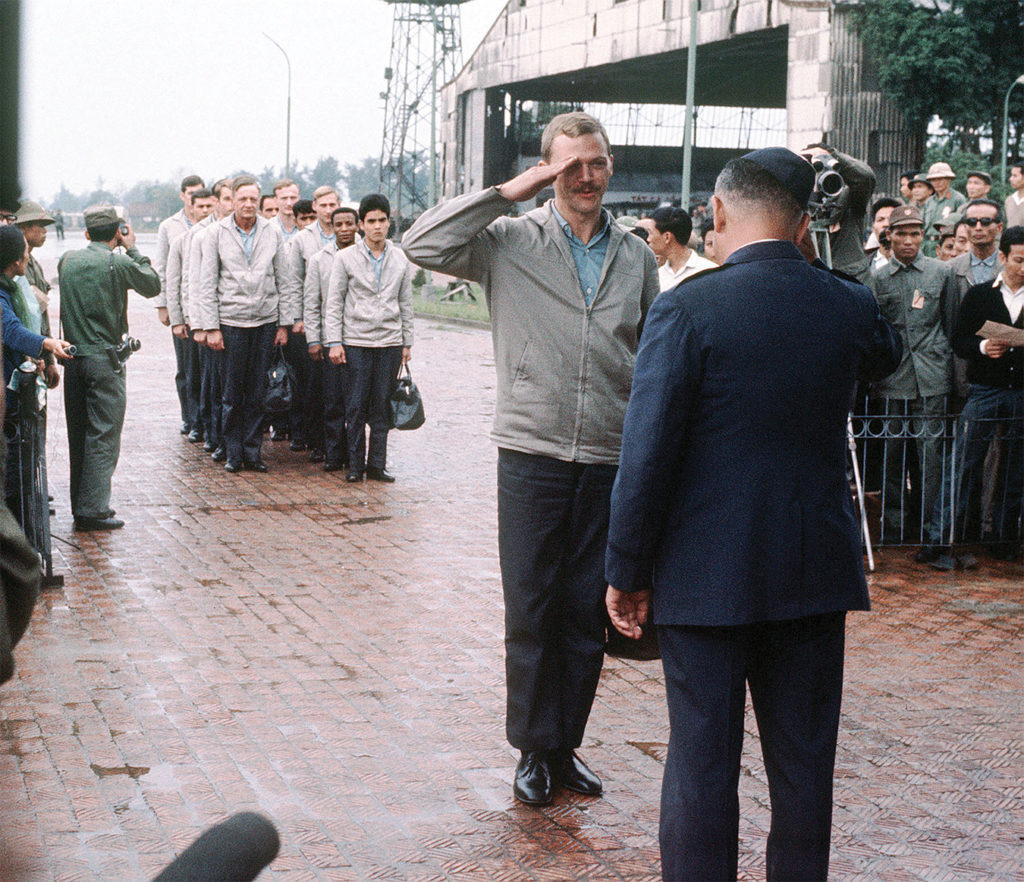
At Clark they would be met by male military service escorts specifically chosen for their similarity in rank, age, and interests to their matching returnee. Each escort was to build rapport with his man while shepherding him through all preliminary medical exams, intelligence debriefings, uniform fittings, career and financial counseling, calls home to family, and so on. The escort was to be the returnee’s “shadow,” even accompanying him to the dining facilities, base exchange, and to visit children at nearby schools—an excursion that became especially popular among those repatriated.
Once returnees were deemed fit for trans-Pacific travel, they would embark on Phase II flights to Travis Air Force Base in California. From there, Phase III flights would deliver the men to nearly a dozen bases throughout the U.S., usually nearest their homes and families. They would then undergo more comprehensive medical and psychological testing and treatment, as well as thorough intelligence debriefs to help determine the status of remaining POWs or those listed as missing in action.
Finally Being Released
All that lay ahead as Alvarez and the others climbed off the buses and formed smart columns, two abreast. Nearby, Air Force Col. James R. Dennett, head of the 18-man Reception Support Team and top U.S. negotiator on the ground, worked with his North Vietnamese counterpart, Lt. Col. Nguyen Phuong, to finalize the turnover. Dennett and his team had flown in hours earlier on a C-130 Hercules from PACAF’s 374th Tactical Airlift Wing to facilitate the transfer.
Accompanying Dennett’s team were 16 other crucial personnel, including a flight surgeon, several medical technicians, translators, photographers and public affairs specialists, and an airlift control crew. Also aboard was an AN/MRC 108 mobile radio system and crew which, in conjunction with an HC-130 Hercules radio-relay platform orbiting just off the North Vietnamese coast, allowed for real-time communication between Gia Lam, Clark, CINCPAC headquarters in Hawaii, and even the National Military Command Center in Washington, D.C. The Hercules also provided air rescue coverage for the Phase I flights.
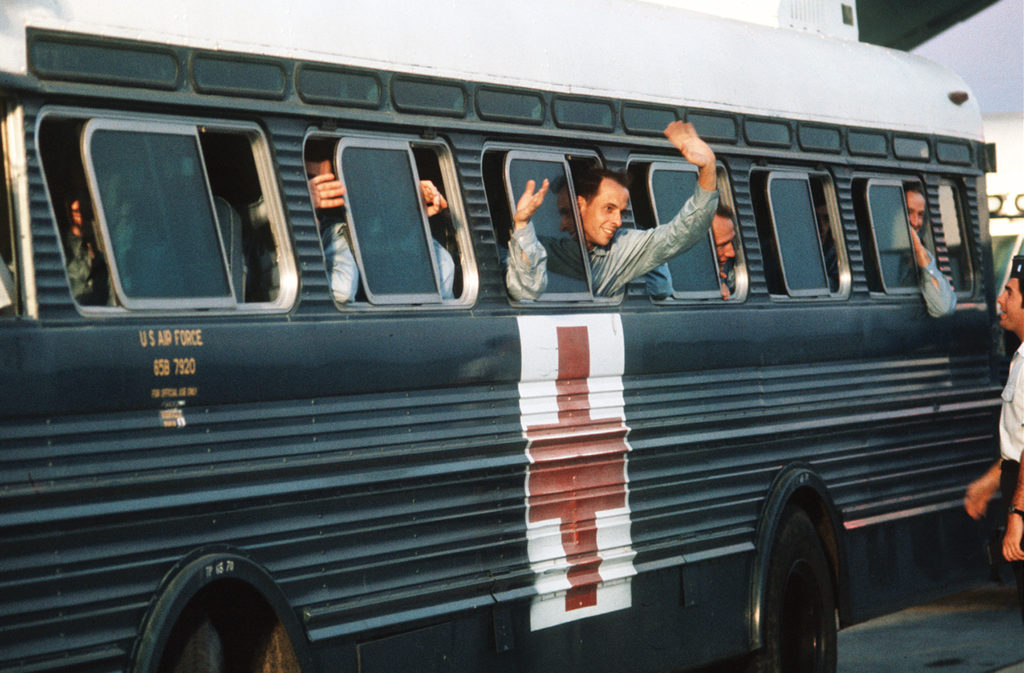
Because information on the health and overall condition of POWs was virtually nonexistent, USAF Capt. Kenneth E. Green, Aeromedical Evacuation Management Branch commander at Clark, came for a firsthand look to better plan for the medical equipment and specialists needed to bring the returnees home safely.
Two civilians accompanied the recovery team: Dr. Roger Shields, 33, chair of the Defense Department’s POW/MIA Task Force, and 38-year-old Frank A. Sieverts, a State Department official specializing in POW affairs. Both men were instrumental in shaping and implementing U.S. repatriation policy for Operation Homecoming and beyond.
Attempts to Hide Abuse of POWs
Back at Gia Lam, Alvarez and Shumaker led the way as the first column marched in good order toward the airport terminal. Gone were the ragged and filthy POW pajamas the men had worn for years. The returnees were now clothed in the identical, light-colored zippered jackets and dark trousers that the North Vietnamese had provided only a few days before.
Many speculated that this, along with the improved diet and treatment afforded the POWs in recent months, was their captors’ attempt to mask years of cruelty and abuse. American and North Vietnamese officials gathered in front of the terminal around a white-covered table shaded by an old parachute canopy.
Each returnee stepped forward as a North Vietnamese official called his name. Alvarez incredulously noted that the roll-caller was none other than “the Rabbit” himself— a particularly ruthless interrogator and torturer given the derisive nickname by POWs due to his prominent ears and overbite.
At first unaware of the Rabbit’s notorious history, Dennett later discovered the truth and moved to bar him from further repatriation ceremonies. “[But] I was informed by our men that it would make no difference whatever,” he recalled. Since the men were thoroughly disciplined, they would not do anything to disrupt the proceedings.
Alvarez stepped forward and saluted the receiving officer, USAF Col. Al Lynn. Then, an Air Force sergeant from the C-130 took the Navy flyer gently by the arm. “C’mon, sir,” he said, softly. “We’re gonna take you home.” Alvarez fought back a sob but maintained his composure as the sergeant led him past the gathered throng of international journalists.
While not part of the original Homecoming plan, the practice of C-130 crewmembers personally escorting each returnee to his C-141 would become standard for all subsequent flights into Hanoi. The reporters called after Alvarez for comment, but he and the others had been ordered by their senior ranking officer to speak to no one other than U.S. representatives, lest an errant comment somehow endanger those still awaiting release.
Reunited with fellow americans
The rest of the men then moved forward in turn, each dealing with overwhelming emotions in his own way. Held captive under terrible conditions for years, many limped from broken bones that had never properly healed. Yet the men nevertheless displayed a poise and military bearing that awed those who had come to take them home. Finally, three litter patients, too sick and hobbled to walk, were brought up by North Vietnamese bearers, with Americans taking over at midpoint to carry their brothers the final yards to the awaiting C-141.
Interestingly, there had been some controversy during planning over which aircraft would serve as the primary asset for Homecoming flights. The Aeromedical Command argued that its C-9 Nightingales, well-appointed and purpose-built for medical transport, were ideal for the mission. But the Military Airlift Command’s C-141 eventually won out for several reasons.
The big cargo jet’s remarkable 3,000-mile flight range—about 1,000 more than the Nightingale’s—made the C-141 well-suited both for both Phase I and II flights. Another factor was the C-141’s cavernous cargo bay. This allowed crews to configure the aircraft as needed, optimizing for any passenger, crew, or equipment need. The C-141s were outfitted with seats and litters to accommodate each returnee’s preference. While the planes could carry many times the number, Homecoming officials limited each flight to no more than 40 returnees to maximize space and comfort.
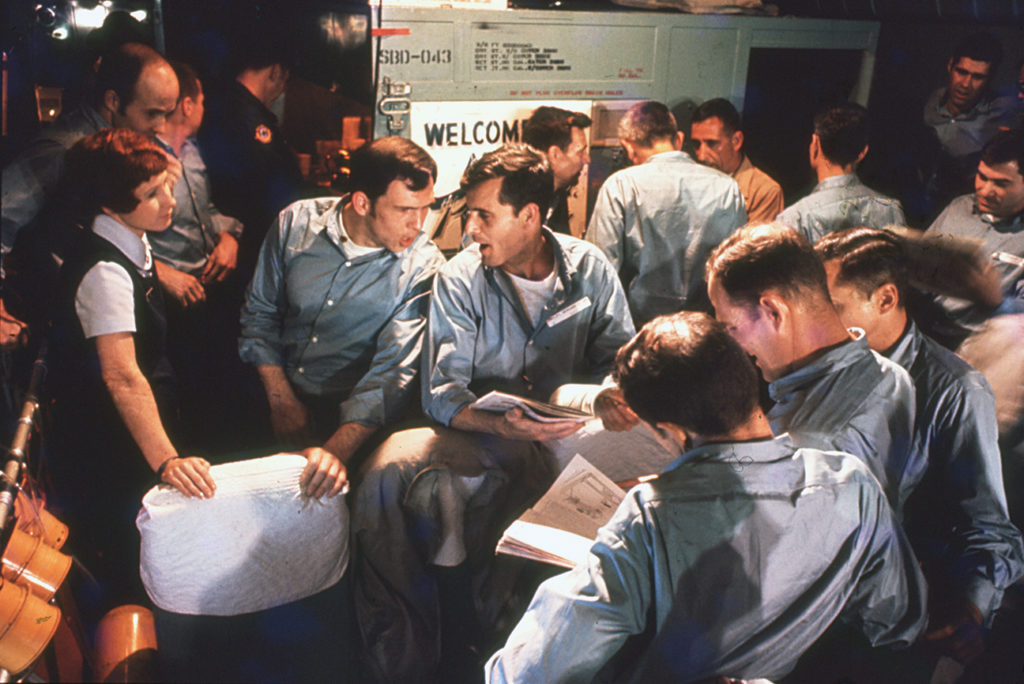
Standard operating procedure provided for both primary and backup aircraft on each Phase I increment. For example, three C-141s had flown in to pick up this first group of 116 returnees, with a fourth orbiting just below the DMZ in case of trouble. Throughout Homecoming’s duration—Feb. 12 through April 4—C-141s would ferry some 567 returnees in 17 Phase I flights out of North Vietnam, while making 38 Phase II flights from Clark to Travis, bringing home 591 former POWs.
Meanwhile, the 9th Aeromedical Evacuation Group’s C-9 fleet was tapped to handle all Phase I flights from areas outside North Vietnam. The C-9 would conduct four flights, picking up 27 former captives from Tan Son Nhut Air Base, South Vietnam, and another three released by China to officials in Hong Kong. Both C-141s and C-9s shared Phase III duty.
Back on the ground, Alvarez ascended the plane’s ramp and spied something he had not seen in nearly nine years—an American woman. He stood awestruck gazing at the “delicate apparition” before him of a beautiful blonde flight nurse in her early 30s wearing a form-fitting uniform. “Every slight movement she made was divine,” he later wrote.
While not aboard Alvarez’s plane, flight nurse Lt. Mikeline “Mickey” Mantel, then 25, says reactions like Alvarez’s were common—and welcome—during her service aboard four Phase I and II flights. “They just loved talking to us,” she says. “It wasn’t like they were trying to pick us up or flirt. It just felt good for them to talk to another American—and a female. And we were so glad to be there for them.”
Magazines and Treats
Nurses and medical techs escorted each returnee to his seat. The crew had brought aboard copies of Stars and Stripes and even a few Playboy magazines, along with electric razors, aftershave, and cloth hand towels. But on the food front, the men were to be disappointed. Homecoming dieticians were deeply concerned over the returnees’ digestive state after years of starvation diets and intestinal parasites. So they prescribed “Sustacal,” a rather bland high-protein drink, as the menu staple.
“The first thing the men wanted when they got on board was something to eat,” recalled Capt. Green. “It was rather embarrassing to say all we have for you is Sustacal.” The onboard flight surgeon eventually relented, allowing nurses to give the men apples, chocolates, even ice-cold Cokes to tide them over. Still, the dieticians never changed the menu for subsequent flights, so medical crews resorted to smuggling aboard chocolate cake, salami, cheese, crackers, and so on.
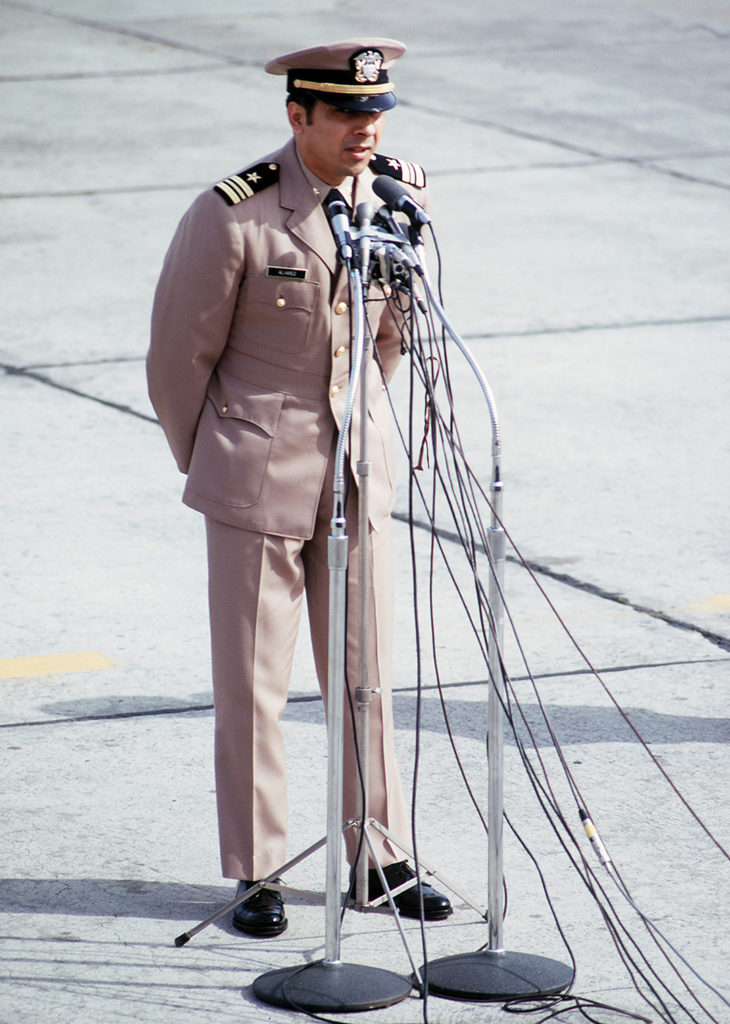
Bland diet or no, the men were ecstatic as the engines revved for takeoff. Alvarez, with his liberation so close at last, prayed silently that there would be no breakdown. The C-141 rumbled over the rough runway as the pilot, Maj. James E. Marrott, poured on the power.
All at once, the Starlifter’s wheels pulled free of the earth, and a tremendous roar went up among the returnees. The men cheered and laughed, backslapped and wept. After years of cruelty, mental and spiritual anguish, they were finally going home.
But what world would await them? Their captors had for years fed them a steady diet of antiwar protests and propaganda—including news of Jane Fonda “manning” an antiaircraft gun in Hanoi. Their answer would not be long in coming.
A Warm Welcome Home
About four hours later, another raucous roar of hoots and howls exploded as the Hanoi Taxi’s wheels touched down at Clark. Alvarez later wrote that during the flight it was agreed that he, as the longest-held, would deplane first and say a few words. At some point, however, Alvarez contends that Navy Lt. Cmdr. Jeremiah Denton, the senior ranking officer aboard, informed the junior officer that he, not Alvarez, would deplane first and speak.
When the moment came, Denton descended the ramp outside the C-141’s jump door and walked down the red carpet. Ironically, given Homecoming’s otherwise detailed planning, this item was procured at the last minute from the Inter Continental Hotel in Manila. Denton was greeted by the thunderous cheers of thousands who had come to welcome the men home.
The senior ranking officer on the second flight that day, USAF Lt. Col. James Robinson “Robbie” Risner, a legend among the POWs for his years of bravery and leadership, said he and his men were overwhelmed. “The sincerity and feelings in the welcome were beyond anything we had imagined,” he later wrote. “Some were crying, many waving flags; they were just like our family.”
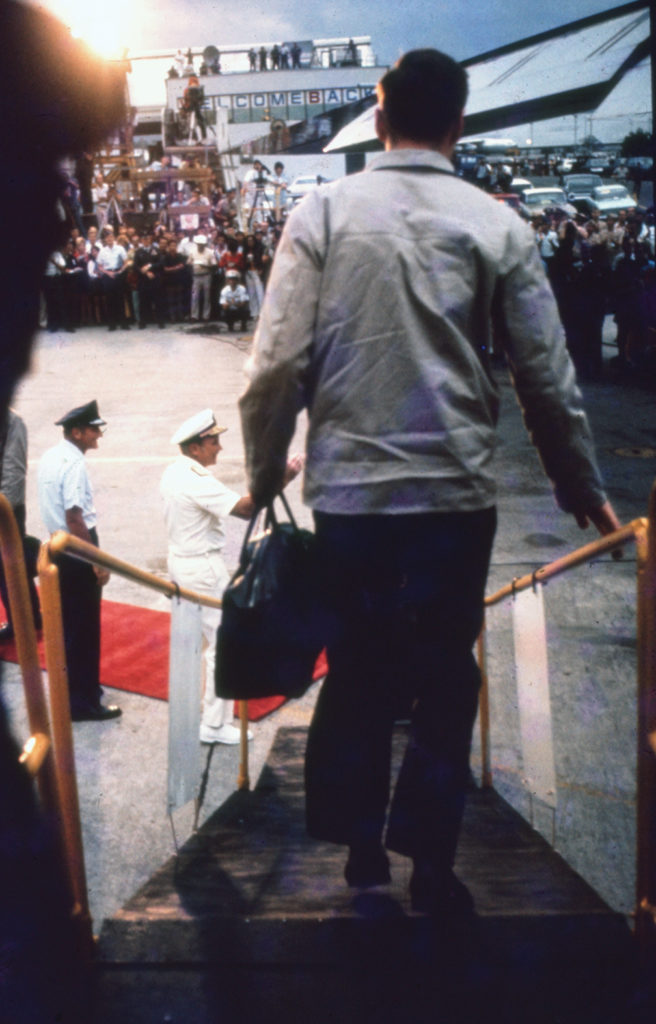
Denton saluted and shook hands with CINCPAC Chief Admiral Noel Gayler and 13th Air Force Commander Lt. Gen. William G. Moore. As TV cameras rolled, he stepped to the microphone. “We are honored to have had the opportunity to serve our country under difficult circumstances,” he said. “We are profoundly grateful to our commander-in-chief and to our nation for this day. God bless America!”
At every stop of the returnees’ long journey home, whether midday or midnight, freezing or raining, massive crowds gave an outpouring of love, welcome, and gratitude for those who had sacrificed so much. The men had gotten their answer in spades.
As for Alvarez, he would indeed get his chance to speak. As he deplaned at Travis and walked his own stretch of carpet—red, white, and blue—he was welcomed by Maj. Gen. John F. Gonge, commander of the 22nd Air Force, along with thousands who had come to cheer his homecoming.
After nearly nine years in brutal captivity, Alvarez addressed the crowd and millions around the world. He spoke of faith, hope, and dreams through the long dark years. “We have come home,” he said. “God bless the president and God bless you, Mr. and Mrs. America. You did not forget us.”
historynet magazines
Our 9 best-selling history titles feature in-depth storytelling and iconic imagery to engage and inform on the people, the wars, and the events that shaped America and the world.


